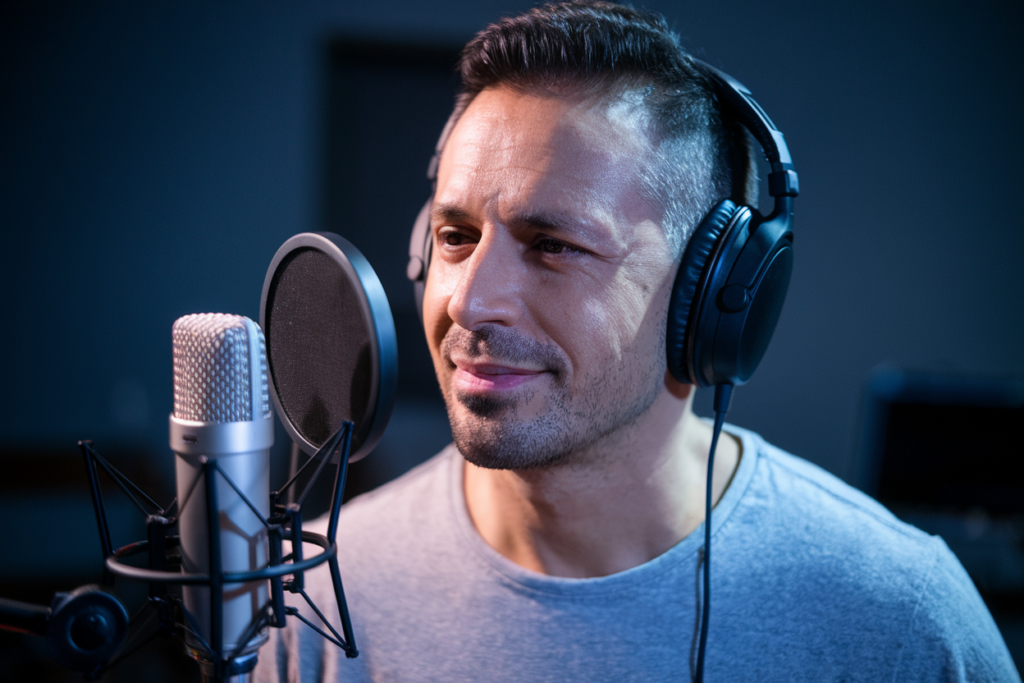Key Takeaways
- Global Reach: The Turkish language has over 80 million speakers, primarily in Turkey and Cyprus, with significant populations in Germany and other European countries due to migration.
- Cultural Significance: Turkish serves as a vital medium for expressing rich cultural traditions, enhancing the emotional depth of content delivered by native speakers.
- Demographic Trends: Population growth in Turkey and the maintenance of language among diaspora communities contribute to a steady increase in Turkish speakers globally.
- Influence of Technology: Digital platforms and language learning apps are crucial for promoting the Turkish language, facilitating community engagement and making learning more accessible.
- Market Opportunities: Understanding the demographics and trends can help businesses effectively target Turkish-speaking audiences through culturally resonant marketing strategies.
- Authenticity Matters: Incorporating skilled Turkish voice talent into projects adds authenticity and improves audience connection, making it essential for effective communication.
Did you know that the Turkish language boasts over 80 million speakers worldwide? As one of the most widely spoken languages in Europe and Asia, it connects a rich tapestry of cultures and histories. But why should you care about these numbers?
Overview of Turkish Language
Turkish is a significant language with over 80 million speakers globally. It ranks among the most widely spoken languages in both Europe and Asia. The language’s roots can be traced back to Central Asia, evolving through various influences from Persian, Arabic, and European languages.
Turkish features a unique vowel harmony system, which creates distinct patterns in pronunciation and word formation. This characteristic enhances its melodic quality, making it appealing for various forms of media, including voiceovers. Many voice artists appreciate the rhythmic flow of Turkish when delivering scripts.
Cultural connections run deep with the Turkish language. It’s not just a means of communication but also a vessel for rich traditions and history. As you explore Turkish content or work with voice talent who speak it fluently, you’ll notice how their performances often convey more than words—they express emotions tied to culture.
Furthermore, understanding the demographic spread of Turkish speakers aids businesses targeting this audience. Countries like Turkey and Cyprus have large populations speaking Turkish, while communities exist worldwide due to migration patterns. Engaging voice actors proficient in Turkish could enhance your project’s reach within these diverse markets.
Incorporating native speakers into your projects adds authenticity that resonates well with audiences familiar with the language. Whether you’re producing commercials or educational content, employing skilled professionals ensures clarity and engagement throughout your material.
Global Distribution of Turkish Language Speakers
Turkish boasts a significant global presence, with over 80 million speakers distributed across various regions. Understanding where these speakers reside can help in targeting audiences effectively.
Regions with Highest Speaker Populations
Turkey leads the way as the primary hub for Turkish speakers, housing approximately 75 million individuals who communicate in the language daily. Cyprus also has a notable population, with around 300,000 native Turkish speakers contributing to its cultural landscape. Outside these key countries, substantial communities exist in Germany, home to nearly 3 million Turkish speakers due to historical migration patterns. Other European nations like France and the Netherlands have growing populations as well, further expanding the reach of the language.
Trends in Turkish Language Usage
The usage of Turkish continues to evolve, influenced by globalization and digital media. Younger generations often utilize social media platforms and streaming services that feature content primarily in Turkish. This trend increases engagement among both native and non-native speakers alike. Additionally, businesses are recognizing the importance of reaching this demographic through tailored marketing strategies that resonate with their culture and language preferences. As more people seek authentic connections within their content—like voiceovers featuring skilled voice talents—understanding these trends becomes essential for effective communication strategies in various industries.
Factors Influencing Speaker Numbers
Several factors impact the number of Turkish speakers worldwide. Understanding these elements provides context to the statistics surrounding this vibrant language.
Demographic Changes
Demographic shifts significantly affect speaker numbers in Turkey and abroad. The population growth in Turkey, which stands at about 85 million, contributes to an increasing number of native speakers. Additionally, young generations are more likely to embrace and use their cultural language, fostering a sense of identity within communities. As families migrate or settle in new regions, they often maintain linguistic ties with their heritage while also adapting to local languages.
Migration Patterns
Migration patterns play a crucial role in expanding the Turkish-speaking population globally. Historical movements have led many Turks to establish communities across Europe, particularly in countries like Germany and France. These diaspora populations not only preserve their language but also integrate it into the multilingual tapestry of their new homes. For instance, nearly 3 million people speak Turkish in Germany due to labor migration since the 1960s.
As you consider engaging with Turkish-speaking audiences or creating content that resonates with them—like voiceovers—it’s essential to acknowledge these demographic and migratory trends that shape how and where Turkish is spoken today. Adapting your approach based on these insights can enhance your connection with this diverse group of speakers.
Impact of Technology on Language Reach
Technology significantly enhances the reach of the Turkish language, connecting speakers and learners globally. Digital platforms enable faster communication and facilitate cultural exchange, creating opportunities for interaction among Turkish speakers worldwide.
Social Media and Communication
Social media has transformed how you engage with the Turkish language. Platforms like Facebook, Instagram, and Twitter allow users to share content in Turkish, fostering a sense of community among native speakers. Hashtags and trending topics often highlight cultural events or issues relevant to Turkish audiences. You can participate in discussions or share your thoughts, increasing visibility for the language. Additionally, social media influences marketing strategies; businesses leverage these platforms to connect authentically with their audience through tailored voiceovers that resonate culturally.
Language Learning Apps
Language learning apps play a crucial role in promoting the Turkish language. Apps like Duolingo and Babbel offer engaging ways to learn vocabulary and grammar at your own pace. You can practice speaking skills using interactive features that encourage pronunciation improvement. These apps often include audio from native speakers—perfect for honing your listening skills or preparing for a project requiring voice talent. With gamified lessons, you stay motivated while expanding your understanding of Turkish culture through various exercises centered around idiomatic expressions or traditional sayings.
The integration of technology into language learning makes it easier than ever for anyone interested in mastering Turkish, whether you’re looking to communicate effectively within your community or enhance projects that require authentic voiceovers featuring skilled talents.
Conclusion
Understanding the Turkish language’s reach and significance opens doors to cultural appreciation and communication. As you explore the vibrant communities of Turkish speakers worldwide, you’ll find a rich tapestry woven from history and tradition. The growth in digital media engagement among younger generations shows how the language continues to evolve, creating new opportunities for connection.
Whether you’re considering learning Turkish or working on projects that require authentic representation, recognizing these trends will enhance your approach. Embracing the nuances of this language not only enriches your understanding but also fosters genuine connections with millions who share its beauty and depth.
Frequently Asked Questions
What is the significance of the Turkish language?
The Turkish language is significant due to its over 80 million speakers, making it one of the most widely spoken languages in Europe and Asia. It fosters cultural and historical connections, enriching communication and understanding among diverse communities.
Where did the Turkish language originate?
Turkish originated from Central Asia and has evolved over time through influences from Persian, Arabic, and various European languages. This rich history contributes to its unique characteristics and appeal.
How does vowel harmony work in Turkish?
Vowel harmony is a key feature of Turkish that enhances its melodic quality. It dictates how vowels within a word harmonize with each other, contributing to the overall fluidity of speech.
How many people speak Turkish worldwide?
Approximately 85 million people speak Turkish globally. The largest populations are found in Turkey (about 75 million) and Cyprus (around 300,000), with significant communities in Germany, France, and other European nations.
Why is there an increase in young Turkish speakers?
Population growth in Turkey and migration trends have led to an increase in young Turkish speakers. Younger generations are embracing their cultural language while engaging with digital media that promotes linguistic connection.
How has globalization affected the use of the Turkish language?
Globalization has influenced how younger generations use the Turkish language, particularly on social media platforms. This shift encourages businesses to create content that resonates authentically with these audiences for better engagement.
What role do technology and apps play in learning Turkish?
Technology significantly aids learning by providing interactive features through apps like Duolingo and Babbel. These tools help users acquire vocabulary and grammar while enhancing their cultural understanding of the Turkish language.
How can businesses connect with Türkish-speaking audiences effectively?
To connect effectively with Turkish-speaking audiences, businesses should engage native speakers for voiceovers or marketing projects. Authentic content creation fosters genuine connections that resonate more deeply with this demographic.







